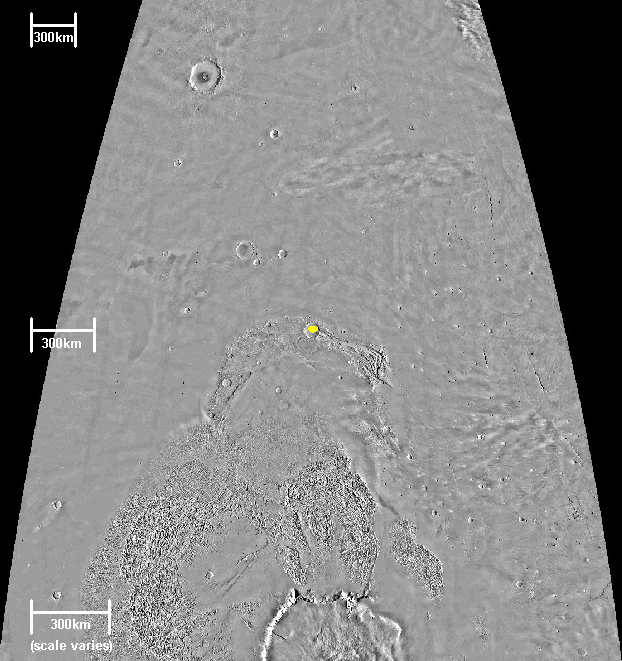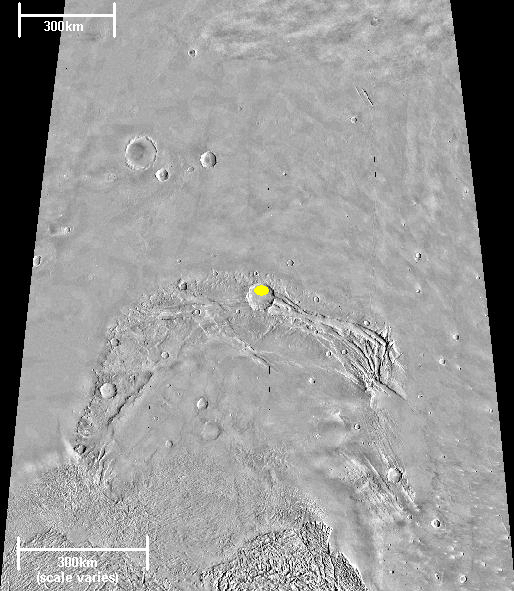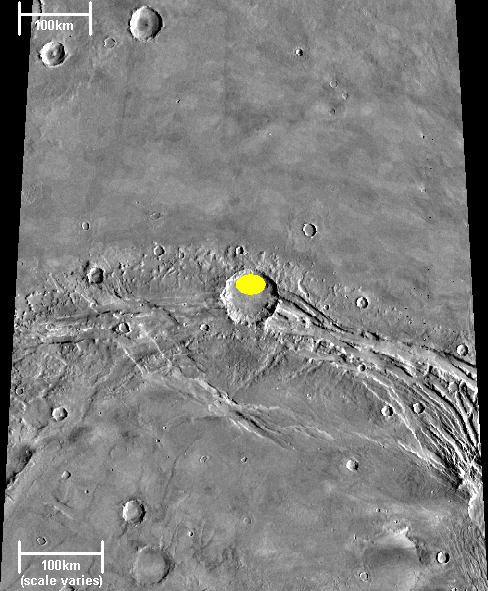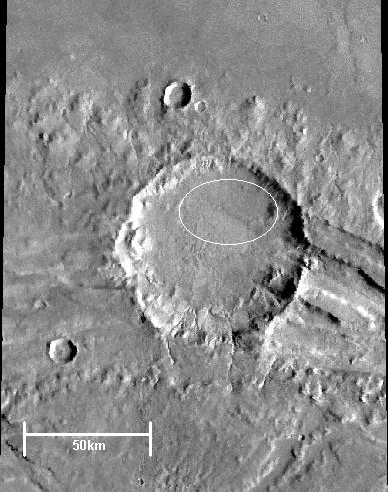Landing Site
Targeting Diacria
Selection Process
Step-by-Step Results
Top Six Sites
Previous Landings
Site Terminology
Sources
Landing Site
Diacria From Above
The following image shows the landing ellipse represented by the yellow oval as seen within the crater. The crater is directly due north of the center of Olympus Mons, the largest extinct volcano in the solar system. Olympus Mons' relative location to the landing site makes it an effective landmark in case of navigation systems failure.
Olympus Mons appears as the large semi-circle at the bottom of the photograph.

Image from Planetary Data System Imaging Node, NASA. Ellipse added.
At closer range, the skirt of Olympus Mons fades into wrinkled-looking terrain, and the enormous deltas associated with the Diacria crater come into view.

Image from Planetary Data System Imaging Node, NASA. Ellipse added.
At even closer range, the landing crew will have very little trouble identifying Diacria Crater. It will be the only crater in the region with deeply incised channels running away from both sides in an east-west direction.

Image from Planetary Data System Imaging Node, NASA. Ellipse added.
The landing site under the ellipse (outlined in white) is smooth crater floor.

Image from Planetary Data System Imaging Node, NASA. Ellipse added.